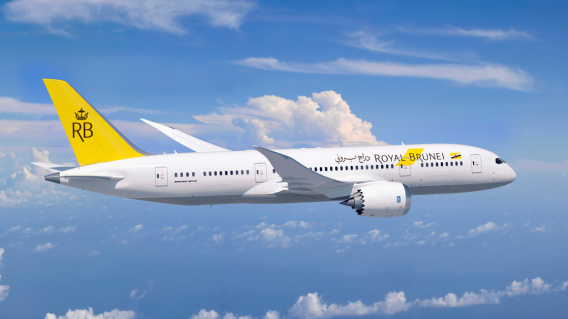
When disaster strikes, sometimes the best move is a pivot.
After two instances of plane crashes this year, Malaysia Airlines is confronted with a serious brand problem. Rebranding has been the need of the hour for airlines on several occasions in the past, whether prompted by a tarnished image, a merger or a financial crisis. Think of ValuJet, the low-cost airline that had a crash in Florida in 1996. It went on to rebrand AirTran, as it operates today. For others, rebranding efforts aren’t necessarily just in response to tragedy.
“A lot of airlines would try to shift their look and feel to make the brand consistent across all platforms—websites, apps, and even food packaging, when they realize that their old logos don’t necessarily fit or look good across them all,” said Jason Clampet, co-founder and head of content at the travel publisher Skift.
As Malaysia Airlines weighs in on its next steps, here’s a look at four recent impressive airline rebrands:
Royal Brunei Airlines
This small national carrier seized the moment and went for a complete branding overhaul thanks to Interbrand, timed with the incorporation of its new fleet of 787 Dreamliners in 2013. The aim was to put this mid-sized flag carrier and tiny nation on the world map, giving it its unique identity while displaying its culture. Changes included a new logo and livery displaying a fusion of beige, yellow and dark brown as well as the country’s coat of arms. A website and new launch campaign items also accompanied the rebranding.
Iberia
Another rebrand orchestrated by Interbrand, this one saw a new logo, identity and livery. The Spanish carrier apparently developed the new design in 2013 after interviewing 9000 people, focusing on the Spanish national colors of red and yellow. It retained its iconic crown, albeit smaller and less prominent, and also redesigned its uniforms, cabins and advertising.
Fiji Airways
Air Pacific was left with no option but to rebrand itself completely, to serve the dual purpose of battling competition from other Pacific careers as well as be identified as the national airline of the small nation of Fiji Islands. So it got Futurebrand on board and went from very generic to very specific— using local Masi art to create a new logo and livery that would make the brand stand out. A new website, uniform, advertisements and social media campaign were also launched as a part of the 2013 endeavor.
Avianca
The Latin American biggie Avianca Holdings came out with its rebranding in May 2013 after merging with TACA Airlines, and unveiling a larger, unified Latin American airline. Aimed at the modern Latin frequent flyer, the redesign by Lippincott appealed to modern sensibilities and saw a predominance of shades of red. It also drew upon the Candor; a symbol associated with Avianca from before and introduced new uniforms.
More in Marketing

Pitch deck: How Amazon is recasting Twitch as a core part of its CTV pitch
Amazon is positioning Twitch as a defining asset in its CTV ambitions.

Netflix transforms former mall department stores into experiential venues
The location in Dallas opens this week, and one at the King of Prussia mall near Philadelphia opened last month.

Future of Marketing Briefing: AI has created a new talent paradox in programmatic agencies
The job isn’t execution anymore. AI handles that. The job is judgement.









